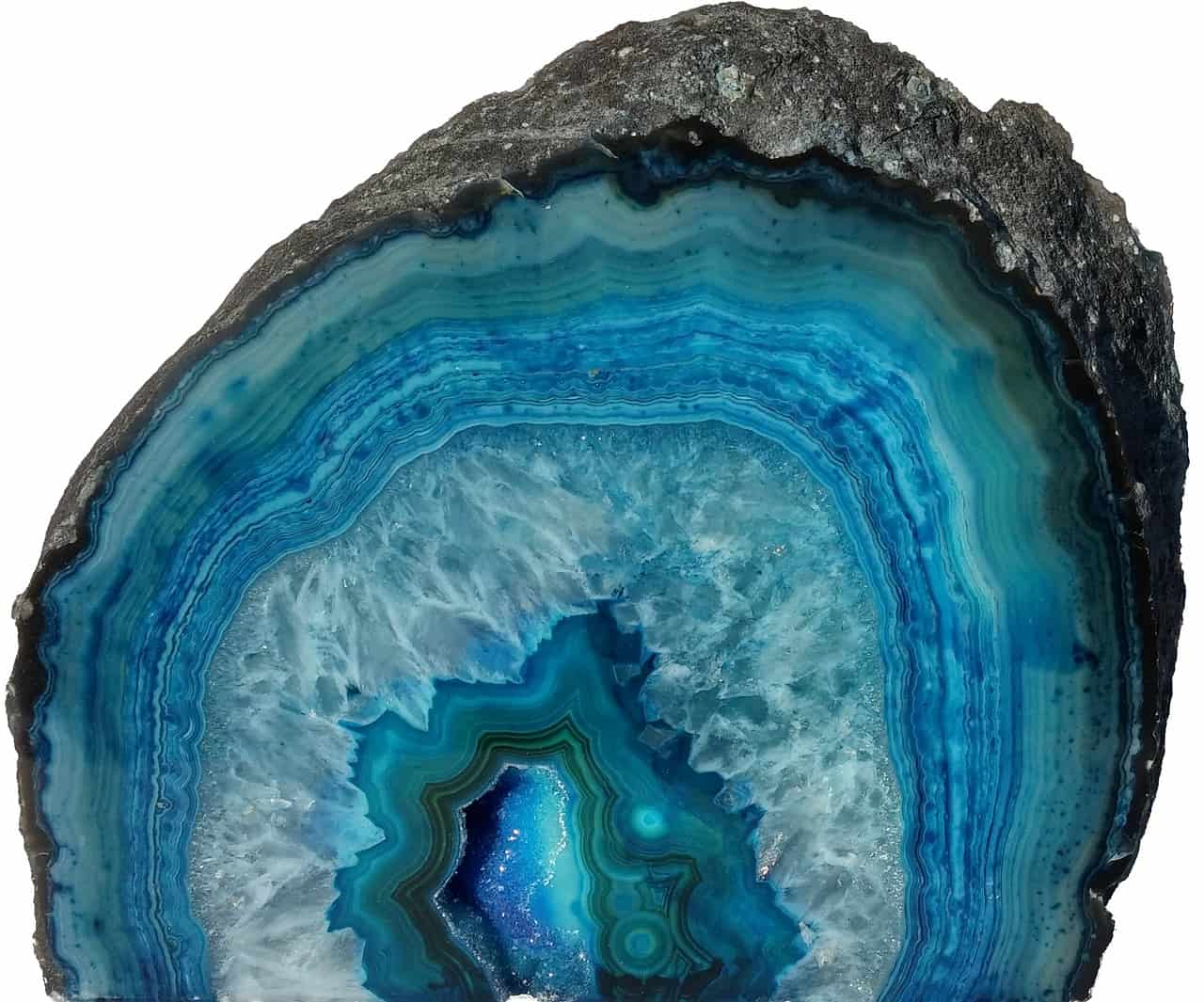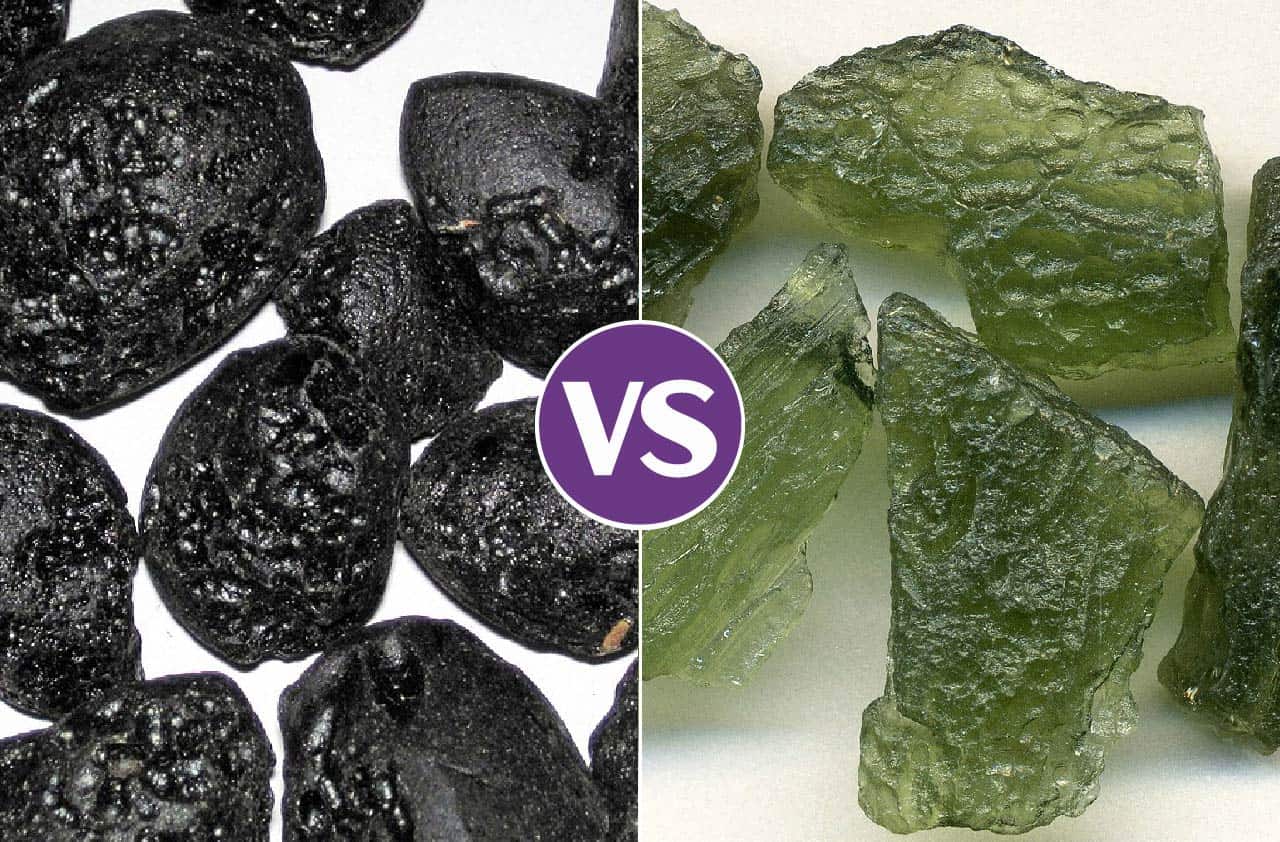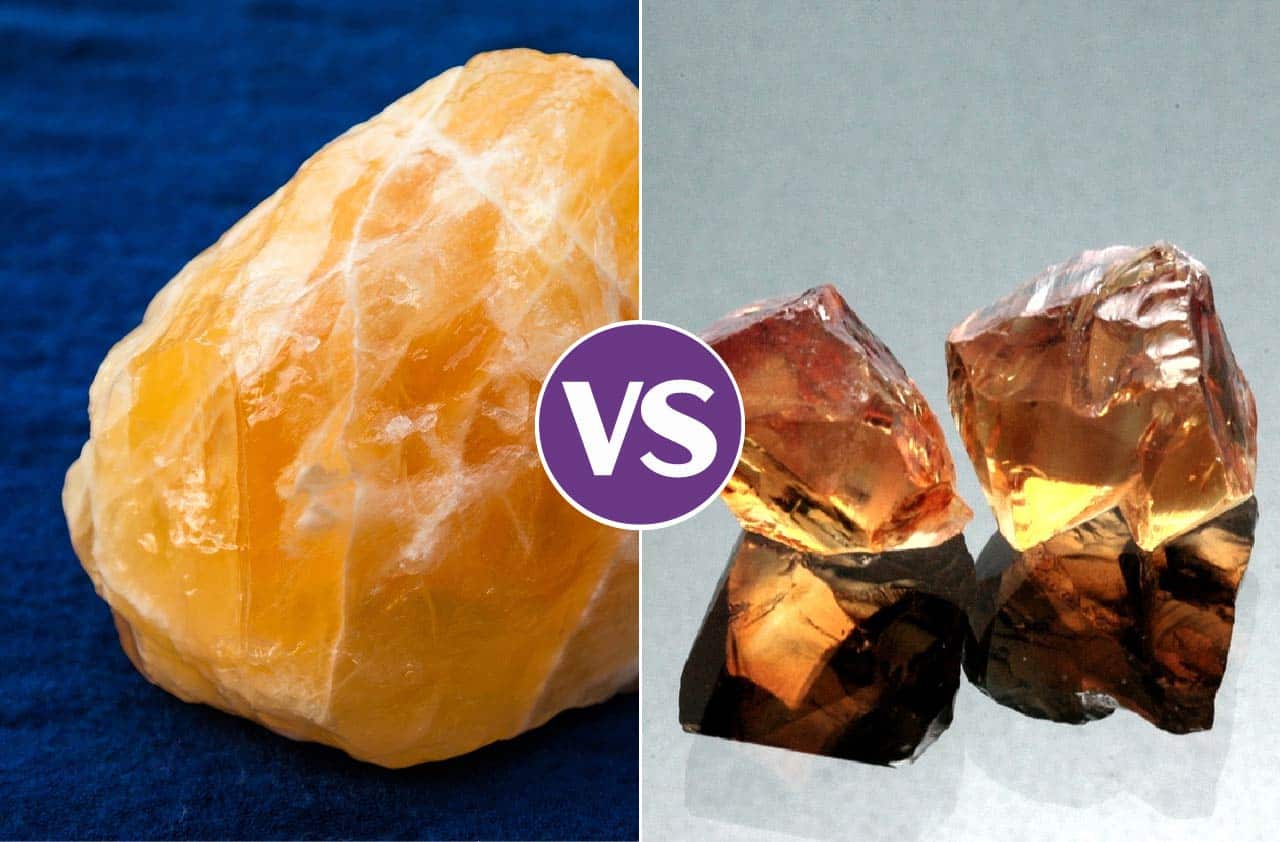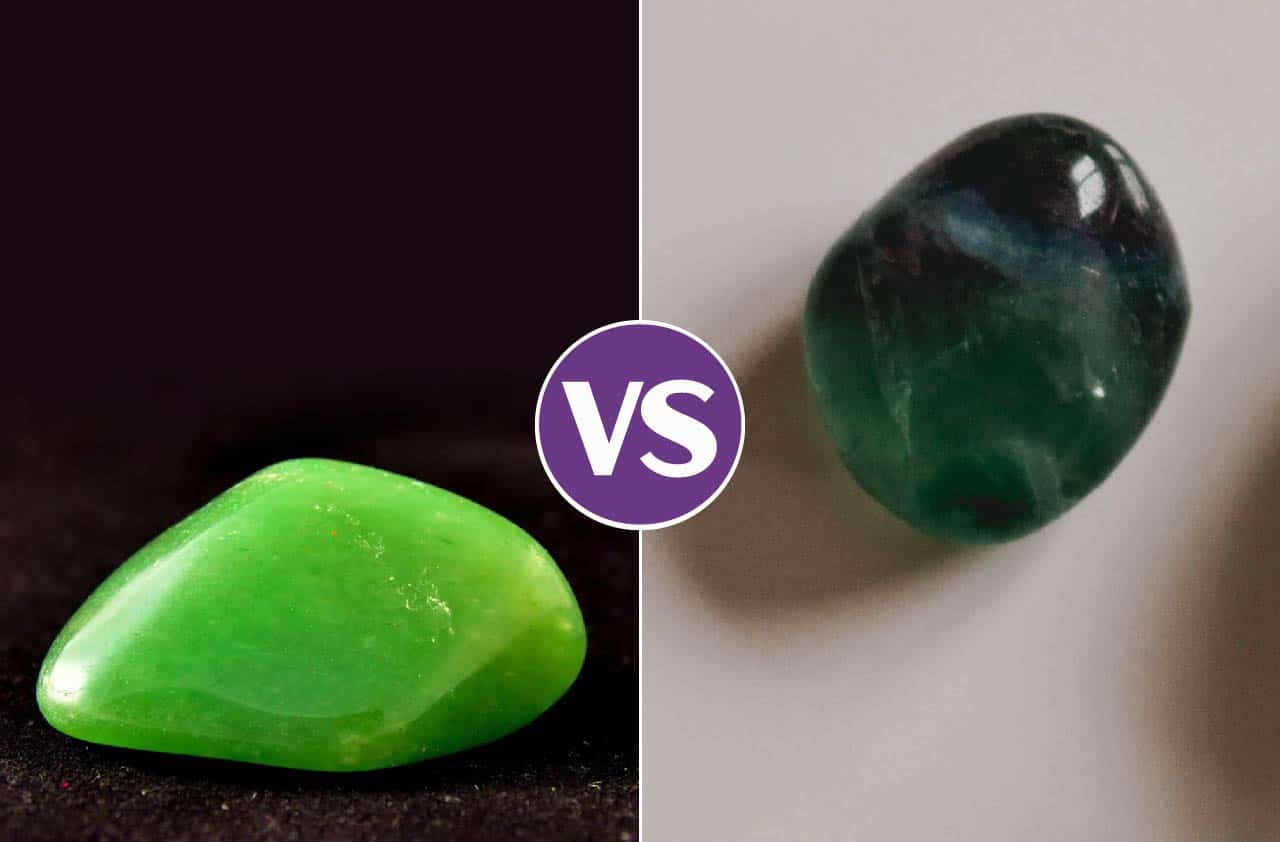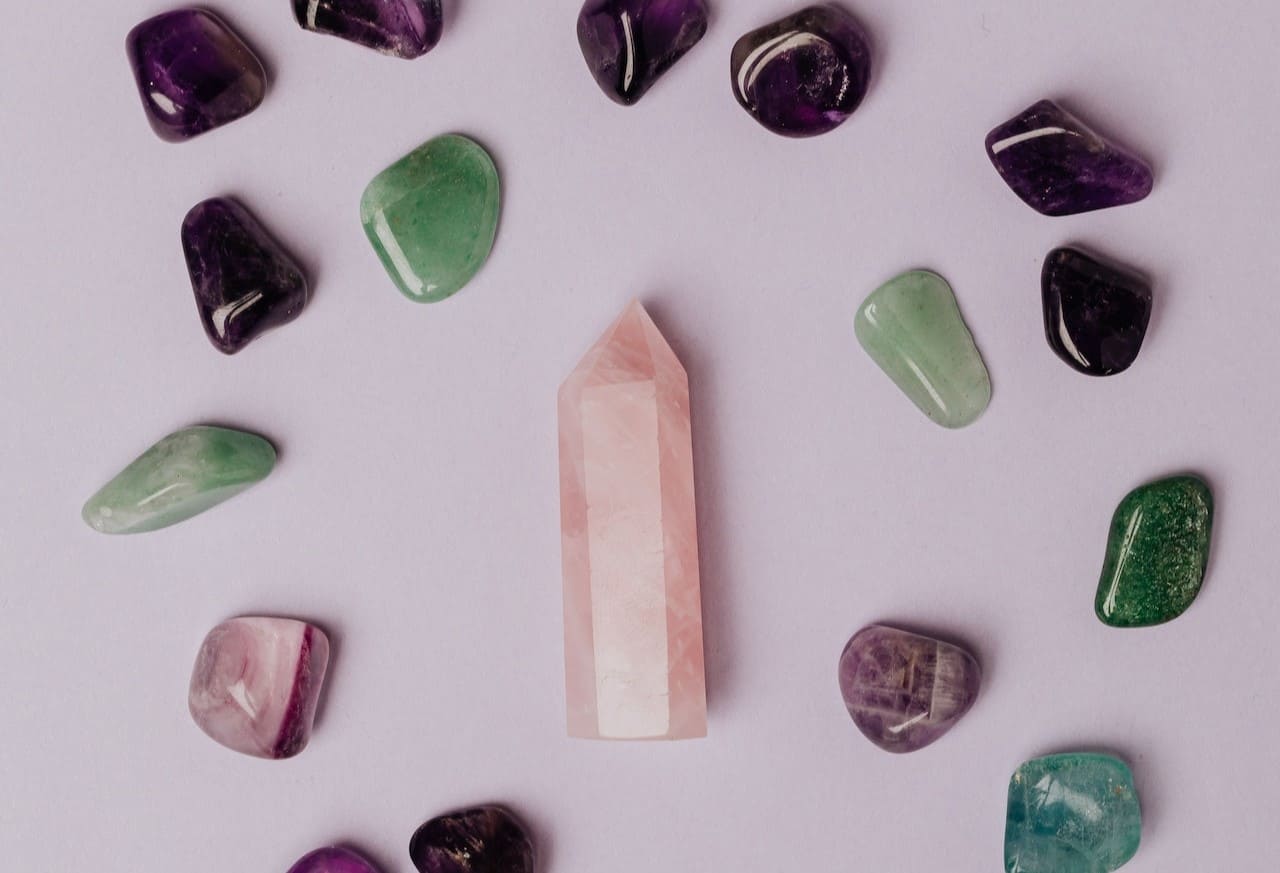Wondering about the difference between chrysoprase and aventurine? You're in the right place.
In this article, I'll get to the bottom of what makes these two similar green gemstones different and answer questions like:

- Why is aventurine sparkly?
- Is chrysoprase rare?
- Which stone makes better jewelry?
Main Differences Between Chrysoprase and Aventurine
- Chrysoprase is a type of microcrystalline quartz, whereas aventurine is a type of quartzite.
- Chrysoprase ranges in shades of green, whereas aventurine can have many different colors besides green.
- Chrysoprase is in more demand, whereas aventurine is less sought after.
- Chrysoprase is an apple green waxy stone, whereas aventurine is a green stone with golden sparkles.
How Does Chrysoprase Form?
Chrysoprase is a green colored type of silica-rich mineral from the chalcedony family. The cause of the green hue of chrysoprase is due to nickel impurities. Chrysoprase often forms in nickel deposits.
Chalcedony is a type of microcrystalline quartz. There are many different varieties of microcrystalline quartz used in jewelry. Jadeite, nephrite jade, and turquoise are just a few of the popular ones. The atoms are often packed so tight in the crystal structure that these stones tend to be translucent to opaque.

Rough Chrysoprase (Credit: Jeff-o-matic)
Chrysoprase forms when the silica rich fluids have cooled after flowing through rock, picking up minerals along the way, including chalcedony. When the liquids cool, they crystallize into chrysoprase.
Where is Chrysoprase Found?
Chalcedony is abundant in the world, but the green variety chrysoprase is only fairly common. It is usually found only near nickel-rich areas. Some of the countries where chrysoprase is found include:
- Western Australia
- Brazil
- Germany
- Poland
- Russia
- United States
- Zimbabwe
- India
- Madagascar
- Kazakhstan
Physical Properties of Chrysoprase
Chrysoprase Appearance
Chrysoprase has been regarded as a lovely stones since the time of ancient civilizations. The name chrysoprase comes from the Greek words "chryso" meaning gold and "prasinon" meaning green. This refers to the green colors of chrysoprase as well as its yellow secondary colors or tints.
The shades of green colors chrysoprase can be include pale green to apple green. However, most people seek out the bright hues of green for chrysoprase jewelry. The more nickel impurities present, the more likely the apple green colors will emerge.

Tree Frog Chrysoprase Carving (Credit: Different Seasons Jewelry)
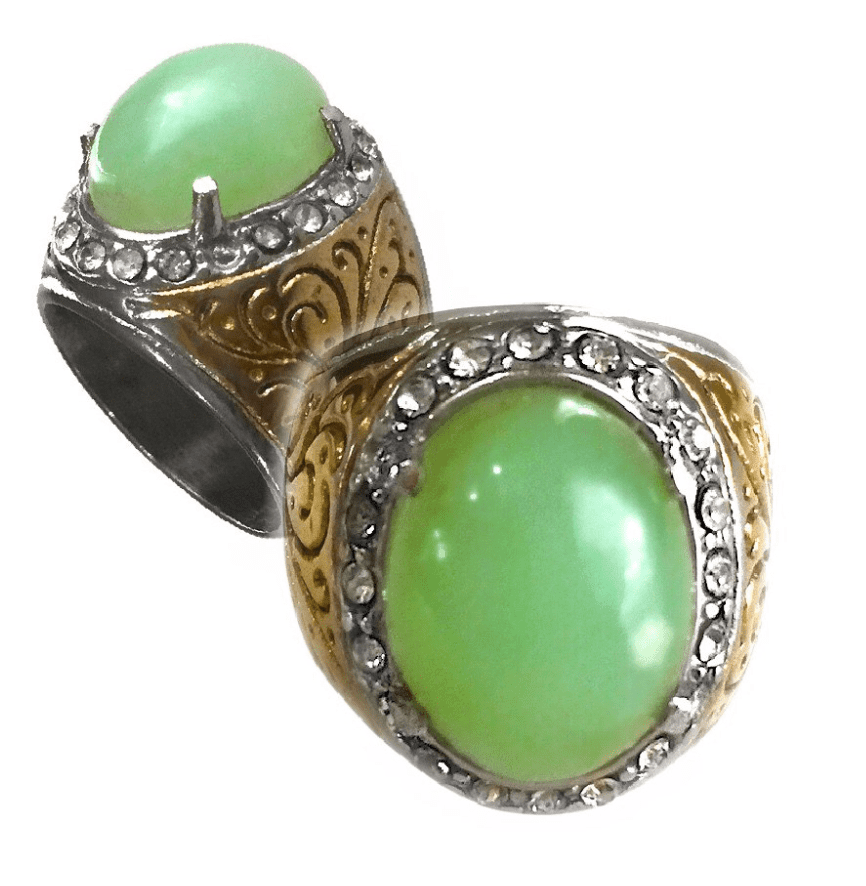
Chrysoprase Cabochon Rings (Credit: Indo Magic)
The green stone is considered to have a waxy luster and a translucent to opaque appearance. They aren't usually faceted, but cut in round cabochons for bohemian and costume jewelry.
Read also: Top Green Gemstones
Chrysoprase Durability
There's different factors that all amount to gemstone wearability. One of the factors is hardness, which is determined by the Mohs scale. The mineral scale of hardness gives all minerals a rating from a scale of 1-10 with 10 being the hardest.
Diamonds are the hardest minerals in the world, reaching a 10 on the Mohs scale. Chrysoprase reaches a 6.5-7. The hardness of a mineral determines its resistance to scratching from the dirt and dust during daily wear. Softer minerals (below 7) may not hold up as well for daily wear as harder minerals like sapphires (9), emeralds (7.5-8), or the popular diamond alternative, moissanite (9.5).
Though chrysoprase is right under, it is considered durable enough for daily wear when taken care of. Wearers should take caution when wearing chrysoprase rings and consider protective settings. Chrysoprase can and will chip or scratch if not taken care of properly.
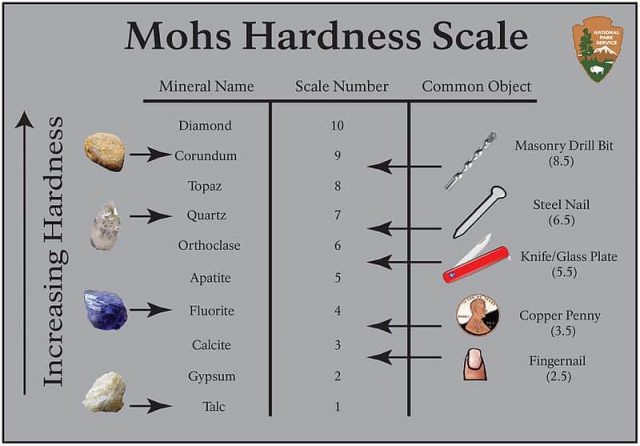
Don't wear lotions or perfumes with chrysoprase because it is a porous stone. Keep away from extreme temps (like an oven while cooking) temperature changes, or prolonged exposure in the sun.
Metaphysical and Healing Properties of Chrysoprase
In ancient times, chrysoprase was believed to have a range of magical properties and benefits toward physical ailments. The ancient Greeks believed it to heal a number of different ailments relating to liver, digestion, and eye problems.
Chrysoprase was also used for carvings, talismans, and other forms of decorative objects. They believed by holding the stone near or wearing it, it would bring luck and prosperity. Many of these ancient beliefs have shifted to the modern times beliefs in crystal healing.
Today, chrysoprase is said to have these healing properties and benefits:
- Bring calm and peace
- Cleansing stone
- Open up the heart chakra
- Healing and growth in relationships
- Open up creativity and self expression
- Detoxification liver, kidneys, digestion
- Provide deeper understanding into spiritual world
Cost of Chrysoprase Jewelry
There's no doubt chrysoprase is a lovely stone, and the cost of it is even more alluring to jewelry buyers. The cost of each individual chrysoprase stone depends on its quality and size, just like with other gemstones.
Chrysoprase stones may range from $20 to $100 per carat depending on its size and quality. Many cheaper chrysoprase stones have been treated or enhanced to produce a stronger green colors.
It's important to make sure you buy chrysoprase from a reliable seller who can provide any information about gemstone treatments when buying larger high quality pieces.

Chrysoprase Jewelry (Credit: Different Seasons Jewelry)
How Does Aventurine Form?
Aventurine forms within metamorphic rocks like sandstone. It happens when silica rich minerals have flowed through rock and picked up additional minerals, which gives it a sparkly appearance.

Rough aventurine in sandstone (Credit: Aquila-chrysaetos)
Quartzite minerals are different than other minerals of quartz. It is composed of a variety of minerals. Sand grains in the earth because compressed with other sediment and rocks under heat and pressure, creating quartzite. Quartzite is said to composed of 90% quartz and trace amounts of other minerals. They have a grainy, yet sparkly appearance often due to the presence of mica inclusions.
Where is Aventurine Found?
Green aventurine is found in abundance in other countries including:
- India
- Brazil
- Russia
- China
- Tanzania
- Spain
- Italy
- Austria
- United States (California)
- Australia
- South Africa
Physical Properties of Green Aventurine
Green Aventurine Appearance
Unlike chrysoprase, green aventurine has many different shades of green. Many green aventurines may use their color shades as part of their trades names during listing. Green aventurine shades may be:
- Light green
- Dark green
- Forest green
- Apple green
- Olive green
- Mint green

Light Green aventurine (Credit: steph.clifford)

Dark Green Aventurine (Credit: Coyoteprince)
But the most valuable green aventurines are bright green colors with a sparkling appearance throughout the stone. Aside from that, color is up to personal preference.
Aventurine is characterized as a translucent to opaque stone, just like chrysoprase.
Green Aventurine Durability
The overall durability and wearability of green aventurine is considered to be very good for all types of jewelry wear. It's hardness rating is at 7, which can be just slightly above the range for chrysoprase.
Quartzite minerals are said to be very durable and resistance to weathering. This is why it's one of the choice materials for building structures. However, green aventurine can be brittle and break if stuck hard enough or fracture.
Read also: How to Clean Lab Diamonds
When wearing aventurine, you should clean it regularly with a solution of mild soap and water. Make sure to dry it completely and store away from other jewelry.

Aventurine and Tigers Eye bracelet (Credit: mimbles)
Metaphysical and Healing Properties of Green Aventurine
The ancient Greeks and Romans used aventurine for a number of different ways. Quartzite minerals have been (and still are today) used in buildings and architecture. They have created tablets, talismans, and other decorative objects.
The ancient Chinese cultures used it for physical ailments for revitalizing the skin and dispelling eye problems.
It was believed that wearing green aventurine or possessing a sculpture would bring prosperity and abundance to the wearer. Luck was commonly associated as well, so this stone was popular among those who gambled or played games of luck.
Some of these ancient beliefs have become the properties associated with green aventurine in crystal healing today. Green aventurine is said to help the wearer/user by:
- Releasing negative emotions
- Invite peace and calm
- Bring abundance and prosperity (like many green stones)
- Enhance spiritual intuition
- Enhance meditation practices
- Boosting immune system
- Aids with skin conditions, headaches, and allergies
Cost of Green Aventurine Jewelry
Like chrysoprase, green aventurine is more affordable too. In fact, it's even more affordable than high quality chrysoprase gemstones. There's less demand for green aventurine than with chrysoprase. This is probably due to the similarity in appearance between chrysoprase and jade stones.
Despite that, aventurine is still a beautiful stone. The best pieces are bright green with lots of fuschite mica sparkles throughout. These pieces are usually around $50 per carat, if it is larger.

Aventurine bracelet (Credit: metaphoricalplatypus)
Smaller pieces of green aventurine can go as little as just a few dollars per carat. Mid range for aventurine is going to be around $20.
Read also: Aventurine vs Jade
Conclusion
Two green colored stones, two very different minerals. Chrysoprase is a type of chalcedony that occurs in a few shades of green. It's characterized by a translucent to opaque waxy appearance similar to that of jade.
Green aventurine is a type of quartz mineral called quartzite. It may occur in many different shades of green, but is most recognized by its glittering or shimmering appearance caused by mica inclusions.
Neither of these are the most popular green gemstones out there, but are more often used for crystal healing jewelry or as little figurines. Chrysoprase is slightly more valuable at best quality than green aventurine and the demand is stronger.
Both green stones are regarded as safe for daily wear, however each one has its own warnings for care.
I hope you've got a good grasp on the differences between chrysoprase vs aventurine. Good luck on your journey to picking the right green stone for you!



